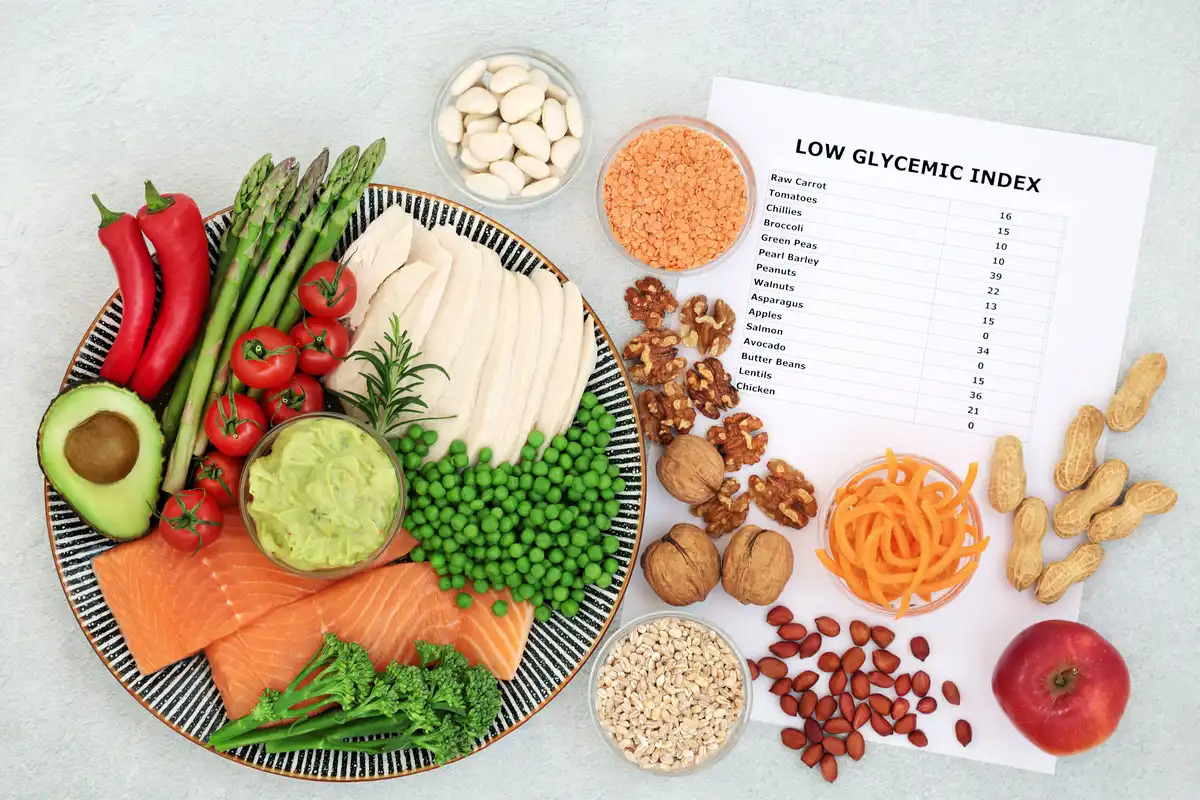A low-GI diet is still one of the few that has been proven to provide benefits based on research, despite diet fads that come and go. Foods with a low glycemic index have significant health advantages over those with a high index, and they are essential for preserving a healthy weight.
What exactly is GI? The glycemic index (GI) measures how quickly a food’s carbohydrate content turns into glucose and is absorbed from the intestines into the blood. Carbohydrate-containing meals are converted by your body into glucose when you eat them, and glucose is subsequently absorbed into your bloodstream.
The quicker a food breaks down and raises your blood glucose (sugar), the higher the food’s GI rating. High GI foods are rapidly digested and induce an increase in blood sugar levels. Due to the fact that low GI meals’ carbohydrate content is digested slowly, a more gradual increase in blood glucose levels can be achieved by sticking as much as possible to low GI foods.
High GI foods are those with a GI scale rating of 70 or higher. Low GI foods are those with a rating of 55 or less. It’s crucial to understand that a food’s glycemic index does not take your intake into account. For instance, despite having a high glycemic index, watermelon won’t significantly affect your blood sugar levels due to its high water and fiber content. Some high GI meals, like baked potatoes, are high in nutrients, like watermelon. Additionally, certain low-GI foods (such corn chips) have significant trans-fat content. However, the GI is typically a crucial tool for determining the best foods for a balanced diet.
Let’s move on to some of the top low GI meal examples.
1. Quinoa
Quinoa contains a substantially higher percentage of protein while having a little higher GI than rice or barley. Quinoa may be able to aid if the rest of your diet isn’t providing enough protein. Since it is essentially a seed, it contains a lot of fiber, more than other grains. Additionally, it is gluten-free, making it a great option for people with Celiac disease or gluten intolerance.
2. Brown Rice (Steamed)
Brown rice is one of the greatest low GI foods, versatile, and filling. It is a main ingredient in most international dishes. Due to the fact that it is whole rice with only the husk (the outermost layer) removed, it is a fantastic source of fiber. In fact, studies have shown that brown rice can lower cholesterol, enhance digestion, increase feelings of fullness, and may even help avoid blood clots. Just keep in mind that brown is always preferable to white!
3. Corn on the Cob
Corn on the cob, one of the best low GI foods, is a fantastic source of slow-burning energy despite tasting sweet. Additionally, it is a rich plant source of iron, folic acid, and vitamin B12, all of which are necessary for the body to produce red blood cells properly. The healthiest way to eat it is without salt and butter!
4. Bananas
In many respects, bananas are a superfood. They provide a lot of vitamin C and are high in potassium and manganese. They are excellent for restoring your fuel reserves after an exercise because of their low GI level.
They are simple to incorporate into smoothies, cereal, or to have nearby for a fast snack. The sugar concentration decreases with decreasing ripeness! It’s an excellent complement to any daily diet because it’s one of the best low GI meals.
5. Bran Cereal
One of the cereals with the highest fiber content is known as bran. A wide variety of minerals, including calcium, folic acid, iron, magnesium, and a number of B vitamins, are also abundant in it. Bran can be simply added to other cereals to increase the fiber content and reduce the GI rating, even though it may not be to everyone’s liking.
6. Natural Muesli
One of the healthiest ways to start the day is with muesli, which is best made with unsweetened rolled oats, almonds, dried fruit, and other sugar-free components. Additionally, there are many other low GI foods that may be used to prepare it easily at home. Yogurt and fresh fruit can be added to make a filling and energizing breakfast.
7. Apples
Pectin, an important prebiotic that supports the growth of healthy bacteria in your stomach, may be found in abundance in apple skin. Apples are also a strong source of vitamin C and high in polyphenols, which act as antioxidants. They taste best when eaten raw and whole. Apples are among the fruits with a low glycemic index. Choose your fruits wisely because many of them contain a lot of natural sugars.
8. Apricots
Because apricots are high in fiber and potassium, they make a great snack for both active people and those attempting to avoid sugar cravings. They provide a variety of nutrients as well as antioxidants.
Apricots can be consumed at any time of the day as part of a nutritious combination with nuts or as a topping for salads or cereals.
9. Kidney Beans
If you want to switch to a plant-based diet, kidney beans and other legumes can be utilized in many vegetarian dishes because they offer a significant serving of plant-based protein. Additionally, they contain a wealth of vitamins, minerals, fiber, antioxidants, and other advantageous plant chemicals. They go well with (whole grain) tacos, stews, and soups.
10. Barley
There are many ways to prepare the cereal grain barley for consumption. It is a good source of fiber, molybdenum, manganese, selenium, and the B vitamins niacin, thiamin, and pyridoxine (vitamin B-6). Additionally, it includes beta-glucans, a type of fiber that has been demonstrated to suppress appetite and lower food consumption and support gut health.
Please be aware that barley contains gluten, making it inappropriate for anyone with Celiac disease or on a gluten-free diet. In this situation, gluten-free substitutes could be made from quinoa, buckwheat, or millet.




